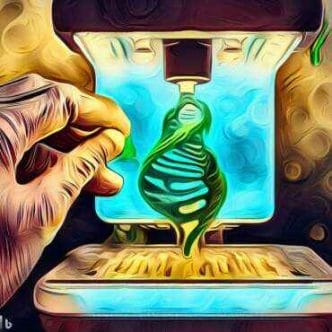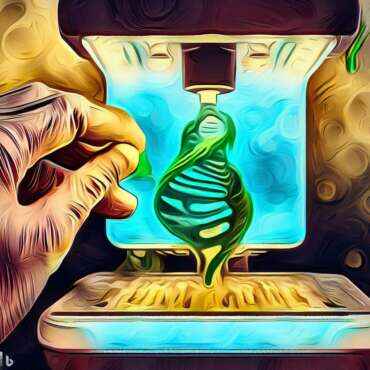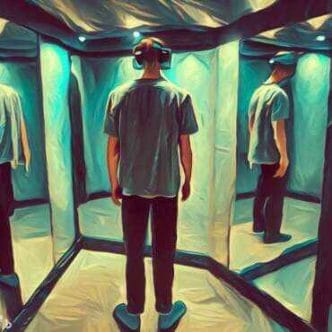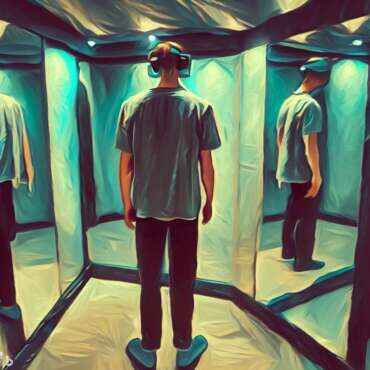Picture this: a loved one needs a new liver, but there are no donors available. In the past, this would have been a death sentence, but with bioprinting, doctors can create a new liver using our own cells. No more waiting for a donor, no more risk of rejection. This could soon become our reality, with the evolution of bioprinting — the process of fabricating biological tissues and organs through 3D printing technology.
The field of bioprinting has made significant strides in recent years, and the results have been nothing short of amazing. Within the medical industry, this technology has far-reaching futuristic implications: reducing the burden of disease by developing treatments for diseases that currently have no effective cure; improving healthcare access by providing low-cost, personalized treatments; accelerating medical research by enabling more accurate and efficient ways to study disease progression; and reducing animal testing by replacing test animals with bioprinted organs and tissues.
Let’s take a look at some of the most groundbreaking applications that are already in the making and poised to revolutionize healthcare as we know it.
Tailoring Biological Materials to Individual Patients
One of the most exciting offerings of bioprinting is in the realm of personalized medicine. It paves the way for personalized medicine, promising targeted and effective treatments by creating biological materials specifically tailored to an individual’s needs. A bioprinted tissue that is specific to a particular patient can be used to test new drugs or create customized treatment plans based on the unique characteristics of a patient’s body. As far back as 2019, scientists at Tel Aviv University used bioprinting to create a 3D-printed heart that includes human tissue and blood vessels. The heart has the potential to be used for drug testing and personalized medicine.
Addressing the Donor Organ Shortage
In addition to enabling unique and tailored treatments, bioprinting has the potential to bridge the gap between organ demand and donor organ shortage. Every year, thousands of people die while waiting for a transplant, with a severe shortage of organs available for donation. Bioprinting can solve this crisis by creating organs and tissues for transplant, without relying on donors. In fact, researchers have already had success in bioprinting simple structures like skin and cartilage, and the printing of more complex organs is well within reach. Scientists have already successfully printed functional human liver tissue that could be used for transplantation in the future.
Making Bones and Cartilage Cool Again
With bioprinting, we may soon be able to bid a long-due farewell to creaky joints. Researchers are working feverishly on developing bioinks that can mimic the structure and function of natural tissues, such as cartilage and bone. This can have a huge impact in the field of orthopedics and orthodontics, allowing doctors to use bioprinted material to repair damaged joints, bones, and even teeth. In the Netherlands, researchers have developed a bioprinting technique to create dental tissue, including enamel and dentin.
Towards Ever-Expanding Applications
Scientists are now also exploring the use of bioprinting for applications in other critical areas, such as creating artificial skin for burn victims and bioprinting blood vessels. For instance, researchers at Harvard University and the Wyss Institute for Biologically Inspired Engineering have developed a method for bioprinting vascularized tissue with a network of blood vessels. This has the potential to be used for repairing damaged tissues.
Why Has Bioprinting Not Picked Up Speed …. Yet?
Despite the many advantages of bioprinting, it is a complex process that requires a high level of expertise and precision. Like any new technology, there are challenges to overcome. One of the biggest hurdles is the ability to go from creating fully functional complex tissues and organs. While scientists have successfully bioprinted human cells and tissues, and organs for small animals, creating more complex organs like the human heart remains a significant challenge.
Another challenge is the cost of bioprinting technology, which requires specialized equipment and materials — making it an expensive undertaking. Right now, bioprinting is restricted to research and commercially viable applications will require scaling up. Finally, bioprinting presents some important ethical dilemmas, which must be addressed before integrating it into the healthcare industry. Concerns range from obtaining informed consent from donors or patients to ensuring accessibility, equity, safety, and efficacy.
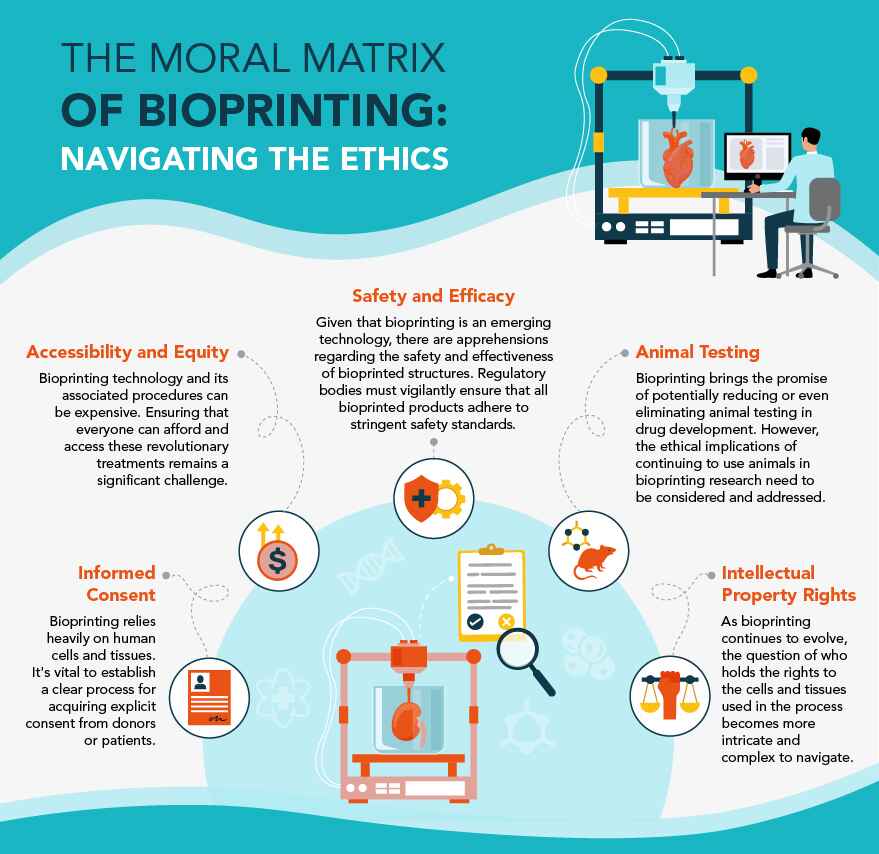
A Medical Game-Changer
The applications of bioprinting are vast — from personalized treatments to drug development. It has the ability to transform the lives of millions of people and offer a lifeline for those suffering from illnesses and injuries that were once considered incurable or irreversible. By redefining the landscape of healthcare, bioprinting could provide a future where organ printing is routine, saving countless lives and heralding a new era in medicine.
____________
Written By: Neha Chaturvedi
